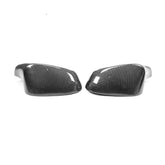The automotive industry is at a crossroads, with sustainability and performance driving innovation in equal measure. As environmental regulations become stricter and consumer demand for greener vehicles grows, manufacturers are reimagining the traditional car exhaust system. The future points towards solutions that not only minimize emissions but also enhance performance, showcasing that eco-friendliness and power can go hand-in-hand. Here's what the future holds for car exhaust systems.

Advanced Catalytic Converters
The catalytic converter, a critical component in reducing emissions, is evolving. Future converters are expected to be more efficient, reducing a wider range of pollutants and working more effectively at lower temperatures. Innovations in catalyst materials, such as using nanotechnology, promise to break down harmful emissions more efficiently, reducing the car's environmental impact without sacrificing power.
Active Exhaust Systems
Active exhaust systems, which can adjust backpressure dynamically, offer a glimpse into the future of performance exhausts. By using valves that open or close based on engine load, these systems can provide a quiet, comfortable ride during cruising while still offering a throaty, powerful exhaust note and enhanced performance during acceleration. This dual functionality ensures compliance with noise regulations without compromising on the driving experience.
Hybrid and Electric Vehicle Exhaust Enhancements
As the automotive world shifts towards hybrid and electric vehicles (EVs), the concept of exhaust systems is changing. For hybrids, exhaust heat recovery systems are being developed to improve efficiency and reduce emissions further. These systems capture waste heat from the exhaust to generate electricity or assist in warming up the engine, enhancing overall vehicle efficiency.
For EVs, while traditional exhaust systems are not applicable, attention is turning to sound. Manufacturers are creating artificial sounds for EVs for safety and aesthetic reasons, offering drivers the emotional connection of engine noise without the environmental impact.
Emissions Reduction Technology
Emerging technologies focus on capturing and storing carbon dioxide (CO2) emissions directly from the exhaust system. While still in the early stages, carbon capture solutions for vehicles could revolutionize how we think about emissions, making cars with internal combustion engines significantly more sustainable.
Lightweight and Durable Materials
The use of lightweight materials such as titanium and carbon fiber in exhaust systems reduces the overall weight of the vehicle, leading to improved fuel efficiency and performance. These materials can withstand high temperatures and are corrosion-resistant, ensuring the longevity of the exhaust system while contributing to a lower environmental footprint.
Integrated Design and Functionality
Future exhaust systems will likely be more integrated into the vehicle's design and functionality. This could include exhausts that play a role in aerodynamics, reducing drag and improving fuel efficiency, or systems that are fully integrated into the car's body for a sleeker design and enhanced performance.
The Role of Regulations and Innovation
Regulatory pressures and consumer demand for cleaner, more efficient vehicles are driving innovation in exhaust technology. As we move forward, exhaust systems will continue to evolve, balancing the need for power and performance with the imperative to reduce environmental impact. The future of car exhaust systems is not just about reducing emissions but redefining what's possible, offering a new paradigm where cars can be both eco-friendly and powerful.










